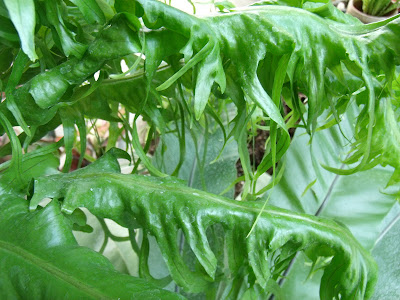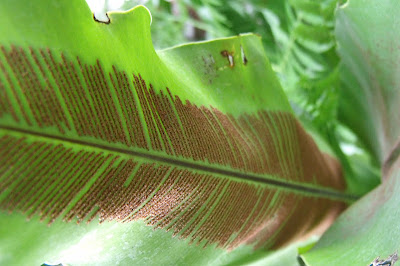I was on the brink of exhaustion. Half of my cerebrum told me to relax for a while, garden, watch a movie or listen to Bach, Mozart, Vivaldi or Beethoven in fugue and baroque for that matter while the other half of the hemisphere logically pointed out that there were still some work that had to be done not to mention helping the kids out with their schoolwork. As a working mom, I can no longer afford to guide them in math so I opted to enroll them in Kumon Programme (some kind of tutorial) instead. Driving them to Kumon is like hitting two birds with one stone; I can go to the grocery or shop until they finish the session, that is if my schedule allows me to. Talking about maintaining my psychological and physiological equilibrium!
Now I'm back in my garden. I miss the plants!! Some of them changed a lot. This was how the Asplenium looked like when it was newly acquired a year ago.
 |
| Asplenium |
Look at how the fronds changed in time...
 |
| After a year.... |
Could it be the that the fronds reverted back to its true form? Or was it the environmental condition that caused the change?
 |
| ... and this. |
The plants have been getting too much water this rainy season. I noticed how the fibrous roots of this Asplenium nidus grew rapidly from the heavy downpour.
 |
| Asplenium nidus fibrous roots |
 |
| A closer look at the roots |
As a compensatory mechanism to control the amount of water, there is a tremendous growth along the roots so as to absorb the excess water brought about by long periods of rain. Imagine how this plant can survive considerably in dry and moist conditions.
 |
| Spores! |